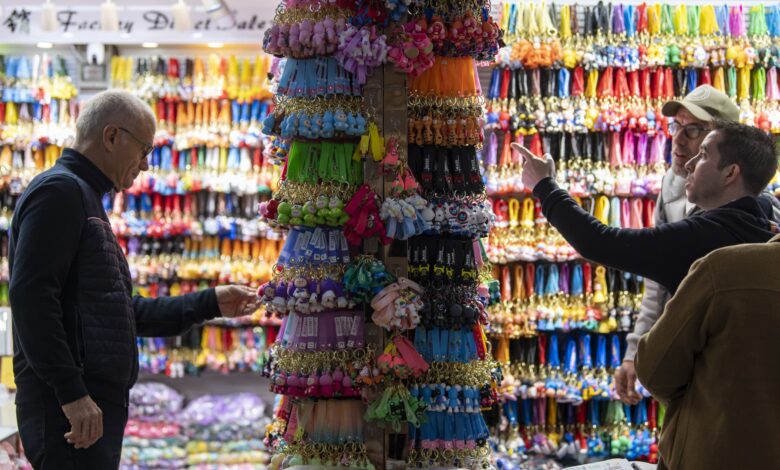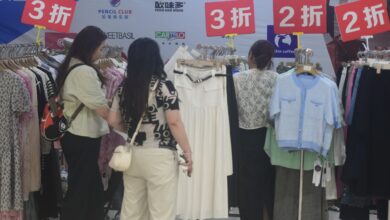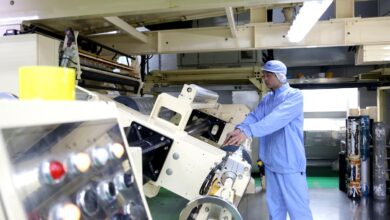Chinese factories halt, restart work to mitigate U.S. tariff disruption

The holiday season is fast approaching, and with it comes the rush to stock the shelves with Christmas merchandise. However, this year, the usual hustle and bustle may be disrupted by the looming threat of tariffs on Chinese imports.
The retail phenomenon known as “Christmas creep” has pushed retailers to start stocking Christmas goods earlier and earlier each year. But with the uncertainty surrounding tariffs on Chinese imports, the Grinch may put a damper on the holiday spirit.
Following President Donald Trump’s announcement of sweeping tariffs on imports from China, many U.S. retailers halted their orders from Chinese suppliers. This pause in production left factories in a lurch, unsure of how to proceed in the face of escalating tariffs.
Despite the uncertainties, some production has resumed in recent days as both Chinese factories and U.S. buyers scramble to ensure that shelves will be well-stocked in time for the holiday season. Cameron Johnson, a senior partner at consulting firm Tidalwave Solutions, emphasized the importance of starting production soon to avoid missing key shopping events like Black Friday and Christmas.
The intricate supply chains that support the production of goods are also feeling the strain. A pause in orders for one product can have a ripple effect on suppliers upstream, leading to a cascading shutdown of production. Even if a deal is reached to ease tariffs, restarting these complex supply chains will take time.
While some U.S. buyers have attempted to reroute goods through other countries, the reality is that the majority of goods imported from China can only be sourced from mainland suppliers. This reliance on Chinese manufacturing makes it difficult to quickly replace existing supply chains and shipping schedules.
For businesses that rely heavily on Chinese imports, the timing is crucial. Electronic products, for example, need to be shipped out of China by early September to reach U.S. shelves in time for the holiday season. This tight timeline means that suppliers should have started preparing for these orders as early as March.
Frontloading efforts, where U.S. buyers stockpiled inventories in anticipation of higher tariffs, have started to dwindle. The number of cargo-carrying container ships departing from China to the U.S. has decreased, and cancelled shipments have increased significantly in recent weeks.
Despite the uncertainty, some businesses are hedging their bets by partially refilling orders from China to avoid empty store shelves. Tariff reliefs granted by both governments have provided some relief, with exemptions given to certain U.S. goods and a rollback of tariffs on various products.
As the holiday season approaches, retailers and manufacturers are navigating the uncertain waters of tariffs and supply chain disruptions. The race to stock the shelves in time for Christmas is on, but the Grinch of tariffs may still have a few surprises in store. The company’s website is advising customers to place their orders by May 16th in order to secure current pricing without tariffs. This move comes as factories in key manufacturing centers such as Yiwu, Shantou, and Dongguan have received clearance from major retailers like Walmart and Target to resume production.
According to Crowley, Walmart and Target have given the green light to factories to ramp up production once again. This news has sparked a sense of urgency among customers who are now rushing to place their orders before the deadline.
Some customers are even opting to place smaller orders, hoping that tariff rates will decrease by the time their products reach U.S. ports. However, there is a risk involved as any breakthrough in U.S.-China trade negotiations could lead to a surge in orders, driving up production costs and shipping prices.
Anjoran, an industry expert, warns that while it is possible to expedite production for smaller orders, a sudden rush from all American customers could overwhelm factories and result in expensive air shipments.
With these uncertainties looming, it is crucial for customers to act quickly and secure their orders before the deadline to avoid any potential price hikes. By placing orders now, customers can lock in their current pricing and ensure a smooth delivery process.
In conclusion, the company’s proactive approach to urging customers to place orders early reflects the volatile nature of the current trade landscape. By staying ahead of potential tariff changes and production delays, customers can mitigate risks and secure their supply chain for the months ahead.





